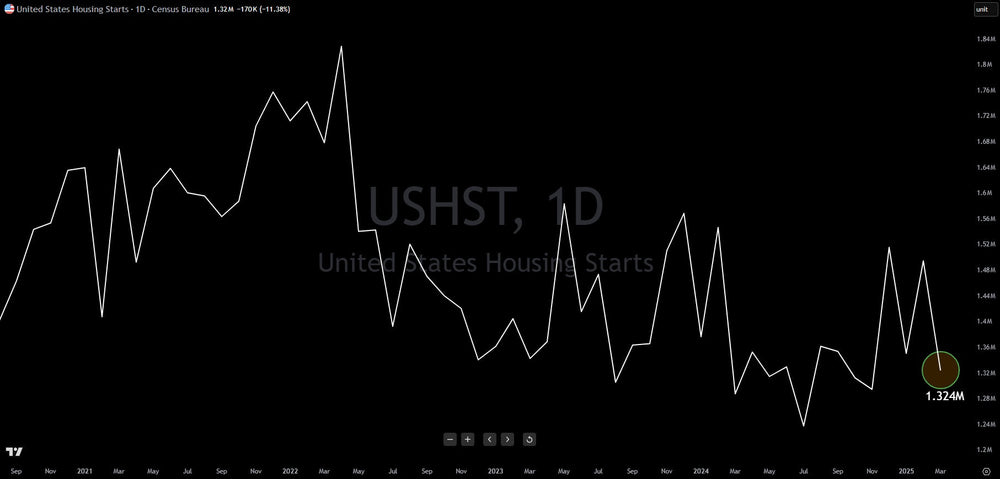Housing Starts Fall More Than Expected: Here Is The Data

Housing starts in March 2024 registered at 1.324 million units, considerably underperforming the projected 1.42 million. This shortfall underscores ongoing weakness within the housing sector, driven primarily by the challenging interplay of high interest rates, persistent affordability issues due to high prices, and general economic uncertainty. Compounding these factors, a falling stock market seems to be further eroding buyer confidence, leading to hesitant demand and forcing sellers to reduce their price expectations.
-
Definition: Housing starts are an economic indicator that measures the number of new, privately-owned residential housing units on which construction has begun during a specific period, usually a month. A "start" is generally counted when the excavation for the foundation or footing of the building begins.
-
What's Counted:
- Includes single-family homes, townhouses, condominiums, and apartment buildings.
- Each individual unit in a multi-family building (like an apartment complex) is counted as a separate start. For example, starting construction on one apartment building with 50 units counts as 50 housing starts.
- It primarily tracks privately owned housing, though this can include units built by private developers for sale to public housing authorities. It typically excludes government-built housing and group quarters like dormitories.
-
Who Reports It: In the United States, housing starts data is collected and reported monthly by the U.S. Census Bureau and the Department of Housing and Urban Development (HUD) in their "Monthly New Residential Construction" report.
-
Why It's Important (Economic Significance):
- Leading Economic Indicator: Housing starts are considered a key leading economic indicator. This means changes in housing starts often precede changes in the broader economy. A sustained decline can signal an upcoming economic slowdown or recession, while an increase often points towards economic growth.
- Economic Health: The housing sector significantly impacts the overall economy. Construction creates jobs and drives demand for building materials (lumber, concrete, etc.).
- Consumer Confidence & Spending: An increase in housing starts suggests builders are confident about future demand, which often reflects positive consumer sentiment and economic conditions. New home purchases also trigger subsequent spending on furniture, appliances, landscaping, and other goods and services (the "ripple effect").
- Interest Rate Sensitivity: Housing activity is very sensitive to changes in mortgage rates. Rising rates tend to dampen starts, while falling rates can stimulate them.
- Inflation Indicator: Strong housing construction activity can sometimes contribute to inflationary pressures due to increased demand for materials and labor.
-
How Data is Presented:
- The headline number is usually presented as a Seasonally Adjusted Annual Rate (SAAR). This adjusts the monthly figure for seasonal variations (like weather impacts) and projects what the total number of starts would be for the year if that monthly pace continued.
- The data is often broken down by region (Northeast, Midwest, South, West) and by structure type (single-family vs. multi-family).
- Because monthly figures can be volatile due to weather or other short-term factors, analysts often look at trends over several months or use moving averages to get a clearer picture.




